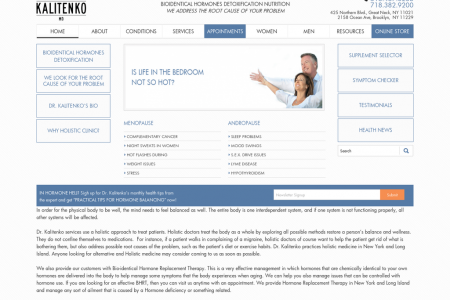
Information Overload and You
From the book The 24-Hour Customer
HOW THE BRAIN COPES WITH
INFORMATION
REPEAT, REPEAT, REPEAT, REPEAT, REPEAT, REPEAT
"STRESS RESPONSE" -
chronic stress can cause routine and habitual behaviour. Rats that were chronically stressed engaged in rote responses, such as compulsory pressing a bar for food they had no intention of eating. Regions of the brain associated with conscious decision-making and goal-directed behaviours had shrivelled, while brain sectors associated with habit formation thrived
MIT Study: 90% of participant daily traffic patterns were so entrenched that a mathematical equation could predict where they would go next.
Multitasking #FAIL
2X+ task completion time
XXX more errors
Research has found that multitasking increases time to complete tasks by more than two times and dramatically increases errors.
THE LIGHTS ARE ON
45% Percent of human behaviour spent in repetitive and unthinking tasks
"Sleep-shopping" - Consumers buy the same 150 items every week even though the average grocery store stocks 30,000+ items
48% Percent of screen time engaging in simultaneous activities
MENTALLY SHUTTING DOWN
Ways our brains attempt to focus attention on relevant information and black out irrelevant inputs
"Cocktail Party"
Filtering out sounds or visuals
"Attentional Blink"
Too much information creates a mental blind spot at the end of a message
"Change Blindness"
Filtering out unnecessary information results in missing major changes
1 in 8 Americans suffer from Internet addiction From the book The 24-Hour Customer HOW THE BRAIN COPES WITH INFORMATION OVERLOAD THE LIGHTS ARE ON ... REPEAT, REPEAT, REPEAT, REPEAT, REPEAT, REPEAT "STRESS RESPONSE" - chronic stress can cause routine and habitual behavior. Rats that were MIT Study: 90% of participant daily traffic patterns were so entrenched that a mathemati- cal equation could predict where they would go next. 45% chronically stressed en- gaged in rote responses, Such as compulsively pressing a bar for food they had no intention of eating. Regions of the brain associated with Percent of human behavior spent In repetitive and unthinking tasks conscious decision- making and goal- directed behaviors had shriveled, while brain sectors associated with "Sleep-Shopping" -Consumers buy habit formation thrived. the same 150 items every week even though the average grocery store stocks 30,000+ items 48% Multitasking #FAIL Research has found that multitasking 2X+ task completion time increases time to complete tasks by more than XXX more errors two times and dramatically increases errors. Percent of screen time engaging in simultaneous activities MENTALLY "Cocktal Party SHUTTING DOWN "Attentional Blink" "Change Blindness" Production analysk has bent the manutacturing time curve down reting in projected sovings of 235 percent in quatety resus. But his is offet by a 54 percent increase in maintenance costs due to higher machine use from Increased production. Moderate net rest projections show Ways our brains attempt to focus attention on rel- evant information and block out 1 In 8 Americans suffer from Internet addiction Fitering out sounds or visuals Too much information creates a mental blind spot information results in at the end of a message irrelevant inputs Fitering out unnecessary e2010 Exponential Edge nc AI Rights Reserved missing major changes SOURCES: For a complete ist of sources efer to www.2HourCustomer.com/rfogrophicsources | Tom, "Fat habits"Duke Research Blog. Duke Univenity. February 28. 2008 | dukeresearchbiogspot.com/2008 02 03 archive.himi joccessed Juy 200o9): Mindy Song and Wendy Wood "Hobitual Purchase and Corsumpton Habits Not Always What tou intend" Jouna of Corsumer Prychology 17(4). 2007: 261-276 Wendy Wood Jeffrey M. Quim. and Deborah A. Kahy. "Habits in Everyday ife: Thought. Emotion and Action." Joumal of Personality and Social Psychology 83 4. 2002: 1281-97 |J Sainsbury PLC, "Annual Report and Finoncial Statements 2009," May 2009 www.jsainsbury.co.uk/a0oshatemativeloepshoppingshi jaccessed October 18, 2009) | Center for Research Excelence (CRE) June 8, 2009 | Natale Angler. "Brain ka CoConspirator in a vicious Stress Loop." New York Times, August 18. 2009. Set of experiments described in the jounal Science. Nuno Sousa and his coleagues at the University of Minha, in Partugal| "Append-Adatonal Findings and Presentation Matariat" Center tor Research Excelence, June 2009 via www.researchexcolence.com/vcmstudy pho. The CRE on independent group tunded by Nesen. The study was conducted by Bal State Universty Center for Medo Design | Man Buchanan. "why We Are AI Ceatures of Hcbit." Newsciantist. July 4 2007, MiT Meda study I Epement conducted by Simons and Levin of the Univenity of Binoli and ohen | trated by Brian Cragin
Information Overload and You
Source
Unknown. Add a sourceCategory
ScienceGet a Quote











